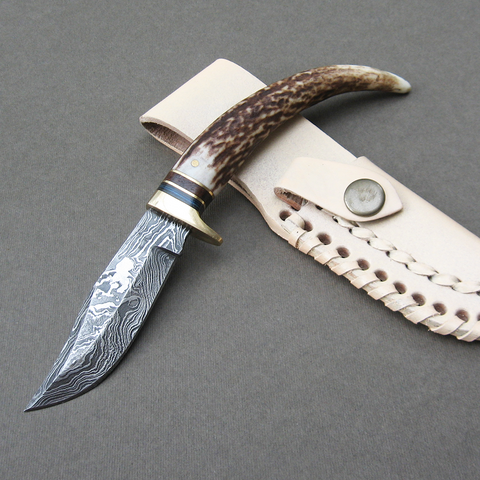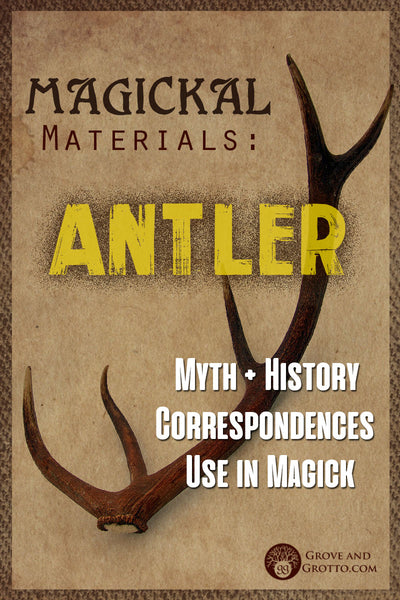
If you’ve shopped for clothing or décor lately, you might have noticed that antlers are having a moment. But humans have been fascinated with antlers long before they were adorning T-shirts at Urban Outfitters. Shamans, magicians, and ancient Pagans have all adored the antler as a symbol of masculine power and the cycle of life. Let’s look at some of the ways antlers can be incorporated into your magickal craft.
Antler Facts
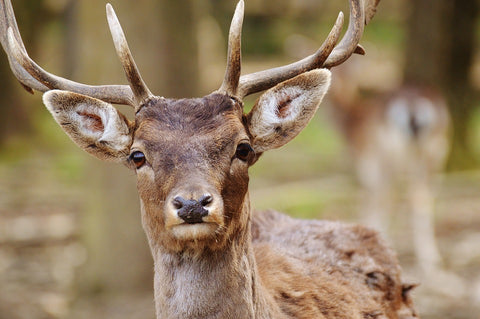
First, the basics. Antlers grow from the heads of members of the deer family, or cervids. Normally only males have antlers, except among reindeer, which have antlers on both male and female animals. An antlered male is called a stag. Male deer grow antlers when reaching adulthood, and adolescent deer’s antlers are covered with a fuzzy material called velvet. In temperate climates, deer shed their antlers seasonally. Experts believe that antlers probably evolved from tusks, which pre-historic herbivores used for foraging and defense.
For magickal purposes, antler, horn, tusk, and bone are all related materials. They represent the spirit of the animal they come from, as well as larger forces of Nature. In Wicca, the male deity is often represented as Cernunnos, “the Horned One.” Technically, antlers are a type of fast-growing bone, not horns. The horns of cattle and goats are a “dead” appendage made of keratin (the same protein in hair and fingernails), while newly-sprouted antlers are very much alive with blood vessels and active cells.
Antlers in Myth
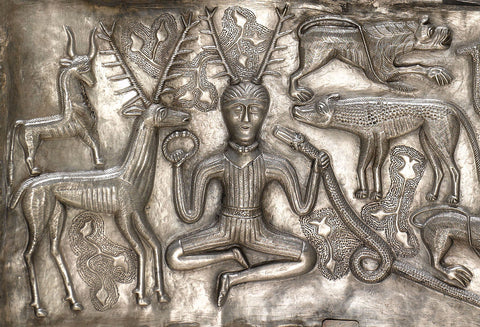
Deer have been an important food source for humans since the beginning of time, so it’s no surprise that the spiritual partnership is an old one. The ritual use of antlers goes back at least 10,000 years. Antlered headdresses and rattles have been recovered from Mesolithic sites, and may have been used in rites to call forth deer for a favorable hunt.
In the Babylonian cosmology, the celestial stag is associated with the life-giving power of the sun. The Norse Prose Edda mentions a kingly stag who sits atop Valhalla and drips bounteous dew from his antlers. Mythologies around the world portray the antlered deer as an elusive and noble beast. The mythic stag is often a shapeshifter or a harbinger of great destiny.
Correspondences of Antlers
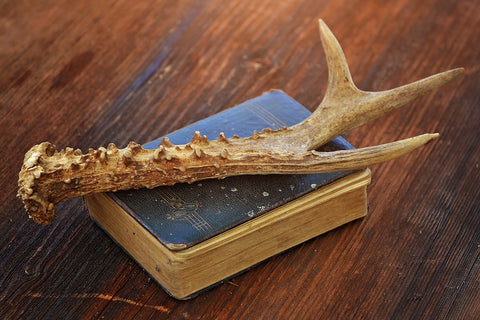
The usual magickal correspondences for the antler are Masculine, Solar and the elements of Fire and Earth. Because deer shed and regrow their antlers, the antler has long been tied to the annual death and resurrection of the sun. The antlered stag represents wisdom, nobility, protection, and the cycle of death and rebirth. To Paganas, the stag represents the God who gives his life to nourish the tribe, and who re-emerges in springtime with velvet antlers.
Among heroes and deities, antlers correspond to such diverse figures as Cernunnos, Freyr, Flidais, Herakles, Sarasvati, Diana and Artemis. While antlers are generally thought of as masculine, they also connect with goddesses of wisdom and the hunt. Some have noted that the shape of an antler has a lunar curve as well as a solar ray-like spread.
Antlered Altar Tools
Antlers have many ceremonial and magickal uses. Ritual headgear is one of the oldest and truest uses for antlers. Donning antlers can help you portray the Horned One or connect more fully with the Deer spirit. If you’re drawn to antlers, consider using an antler-handled athame, wand, or staff.
Runes and amulets are frequently made from round slices of antler. With the right materials, antler can be painted, engraved, and burned to produce a customized piece. Or you can simply place antlers on your altar to represent the Stag spirit.
Cutting and drilling antlers is just like cutting through bone in that it produces a lot of calcified dust. Use sharp tools, a dust mask or ventilator, lung protection. If you use power tools, open a window—singed antler smells like burning hair.
Oh, and another thing: Dogs can’t resist the tasty, nutritious appeal of antlers. Keep antlered tools away from pets. (Unless you want to be like my friend, who found her dog chowing down on her runes like kibble!)
Acquiring Antlers
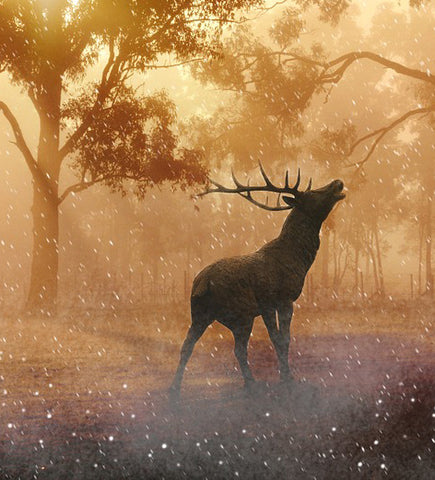
Since antlers are shed naturally, there is no reason to harm an animal to obtain antlers for ritual use. If you have access to land where deer roam free, you can pick up your own during the winter shed season. Observe all local laws and safety rules if you do this. Expect to have company—gathering “sheds” is a popular (and potentially lucrative) activity for off-season hunters and hikers. If it’s your land, it’s kindest to take only what you need. Antlers are an important winter nutrient source for squirrels and other small mammals.
Even city-dwellers may be able to get their hands on antlers. Antique shops and western stores outlets sell shed antlers as décor items. Wood-working shops also sometimes have antlers for use as knife handles. You may have to pay a premium, though: $15-20 a pound is a normal price for good-quality antlers. Some may be shed naturally, and some come from hunters. Ask the dealer how they were acquired, if that’s important to your magick.
How about replica antlers? Especially with the current antler craze, there are all kinds of resin and plaster fakes out there. If you can’t get real antlers, or if you have reservations about harvesting them, you might prefer using replicas as ritual props.
When you incorporate antlers into your spiritual life, you’re joining a long tradition of respect and reverence for the creatures that walk this world with us. Here's to deers!
Read more articles in the archive.

